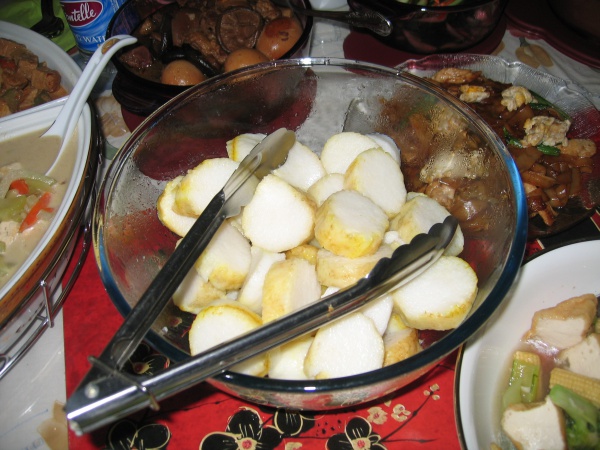Facts About Lontong
Lontong is a cherished Indonesian dish made from compressed rice cake, traditionally shaped into a cylinder and wrapped in a banana leaf. This staple food is also popular in Malaysia and Singapore. The rice is boiled within the banana leaf, then sliced into small cakes, serving as a convenient alternative to steamed rice. It has a similar texture to ketupat, but instead of woven palm fronds, banana leaves are used.
In Malaysia, lontong is often referred to as nasi himpit, though the preparation methods differ. A smaller version of lontong, called arem-arem, is filled with vegetables and sometimes meat, making it a perfect snack. Lontong is usually enjoyed hot or at room temperature, accompanied by dishes that feature peanut sauce like gado-gado, karedok, and satay. It also pairs wonderfully with coconut milk-based soups such as lontong sayur, soto, gulai, and various curries, or as a substitute for vermicelli noodles.
The traditional way to make lontong involves partially cooking the rice, packing it tightly in a banana leaf, securing it with lidi semat (small bamboo pins), and boiling it. Modern methods sometimes use muslin bags or commercially available plastic pouches. In Malaysia, nasi himpit is created by compressing freshly cooked rice between heavy stones or in plastic sachets filled with rice and then boiling them.
Lontong is incredibly versatile and can be enjoyed with a variety of flavors and ingredients. In Indonesia, you might find it served in dishes like lontong sayur, lontong cap go meh, lontong dekem, lontong kari, lontong kikil, lontong kupang, lontong balap, lontong gulai pakis, and arem-arem. In Malaysia and Singapore, nasi himpit is often served in a coconut-based soup like sayur lodeh, accompanied by shrimp, vegetables, fried tempeh, tofu, eggs, and various other condiments.

 Malaysia
Malaysia